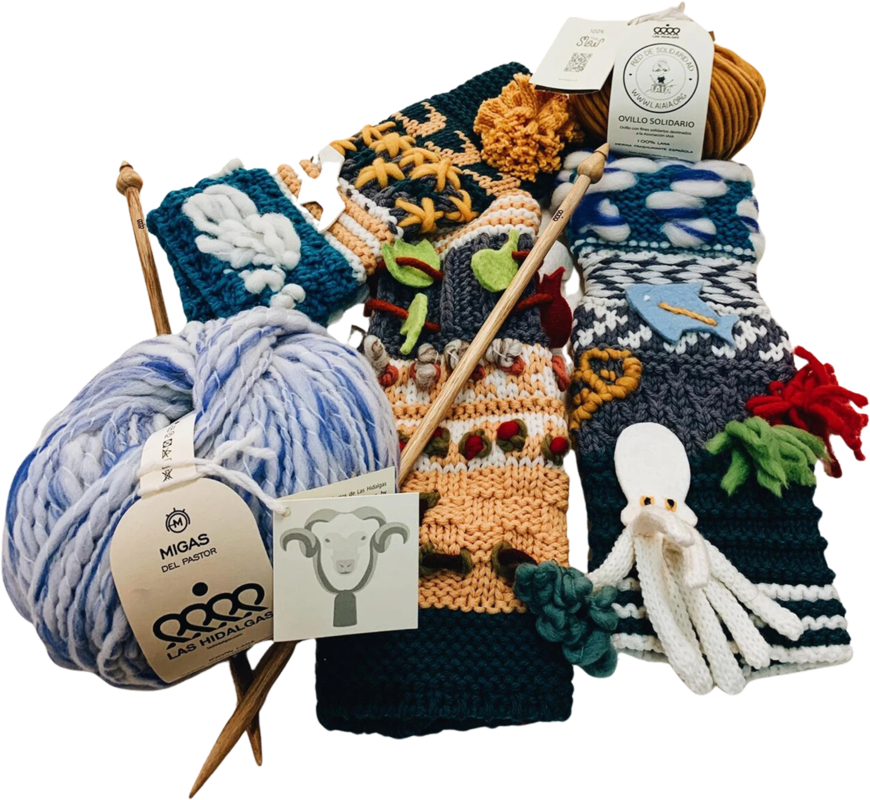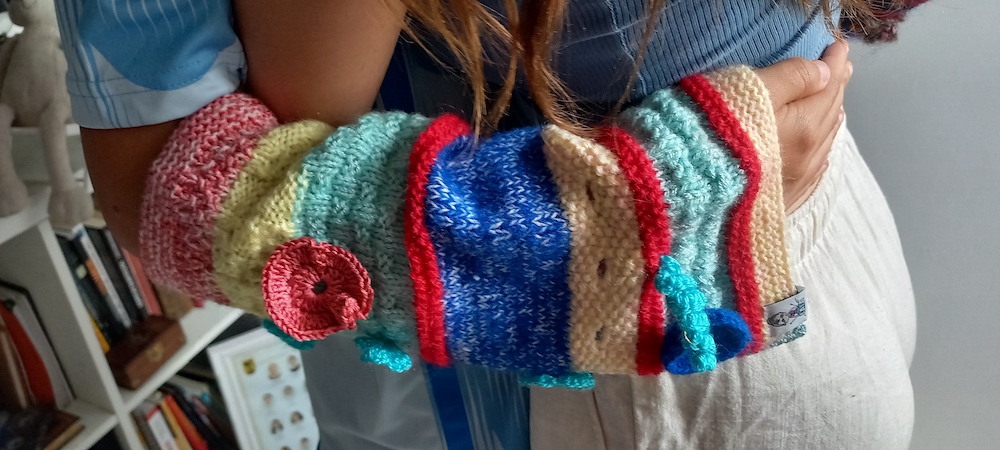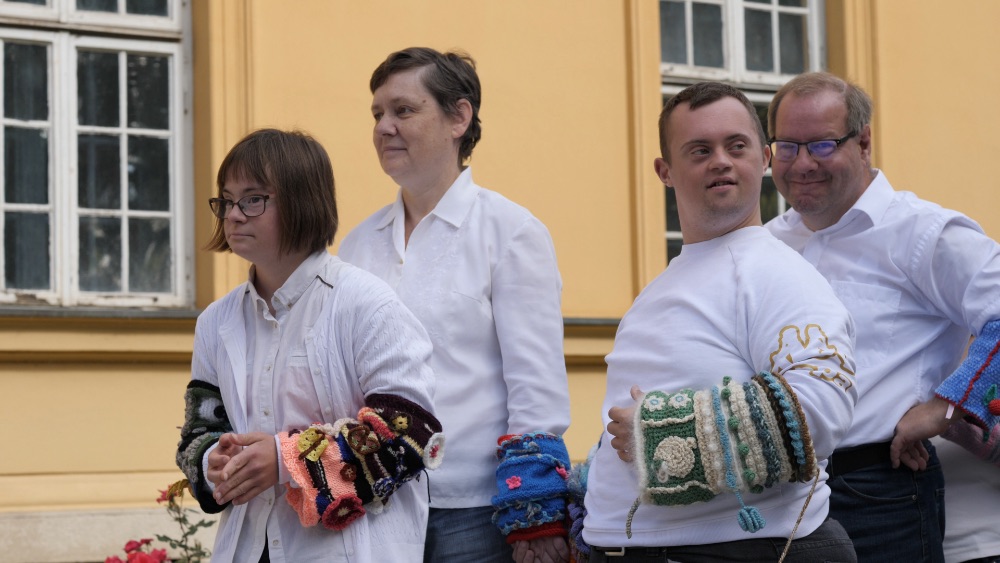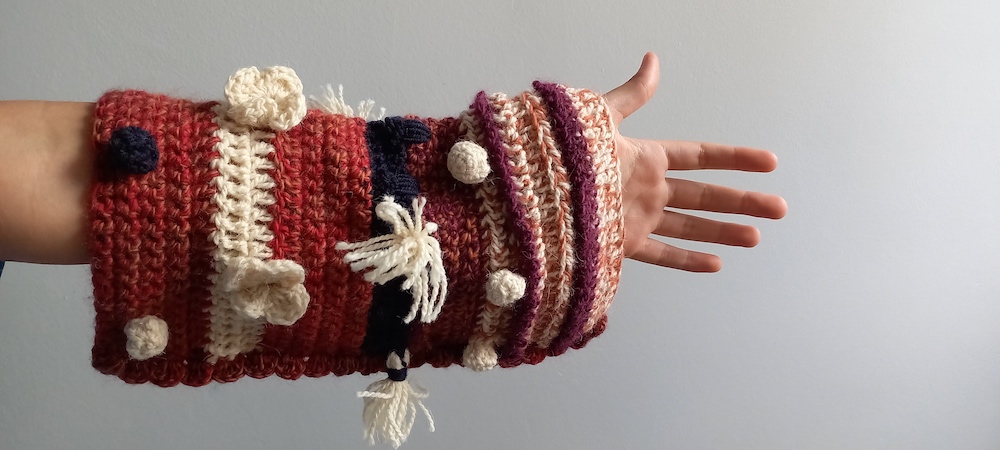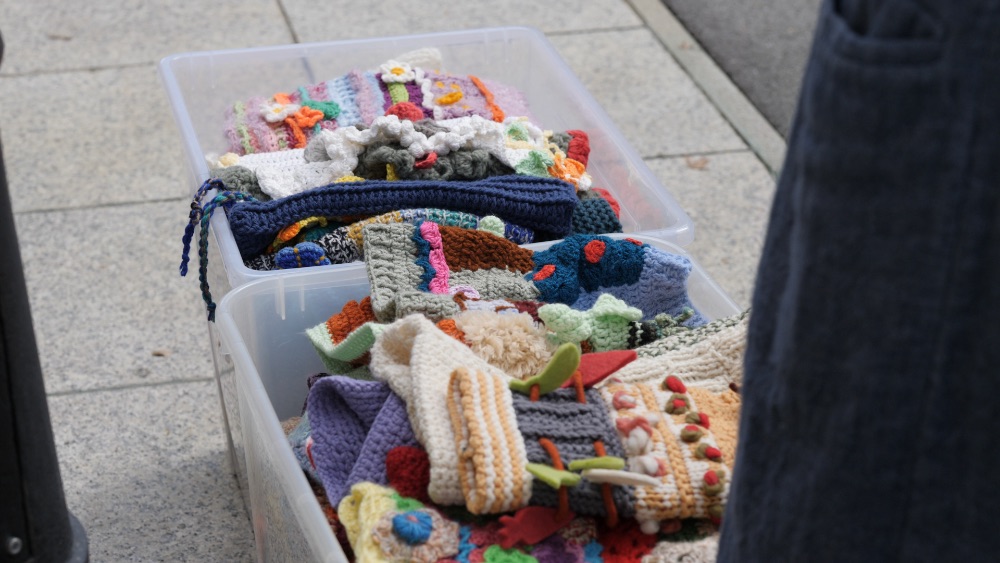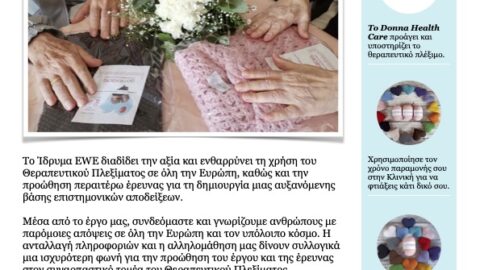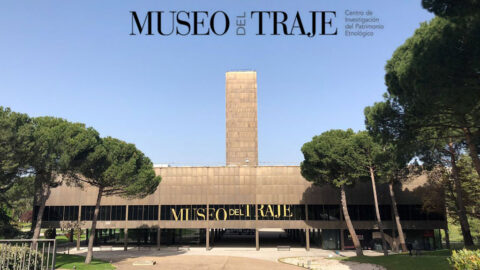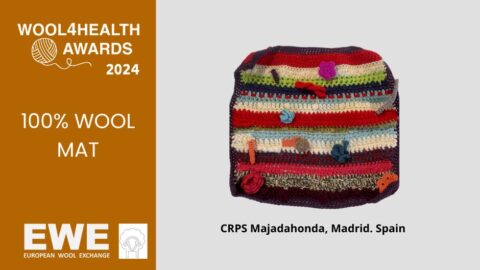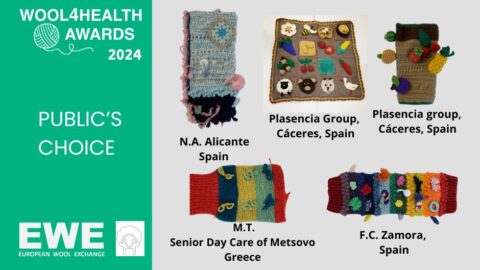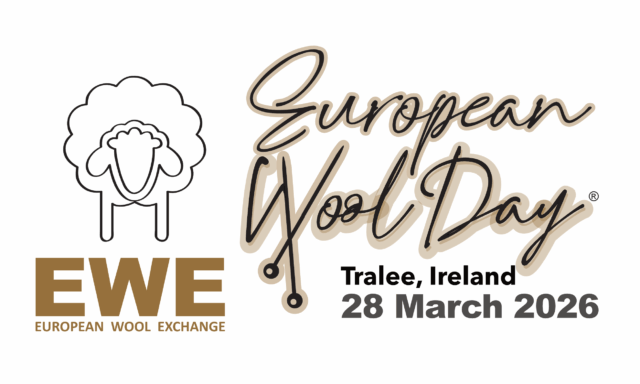
The European Wool Exchange (EWE) through the European WOOL4HEALTH Awards seeks to promote the therapeutic and well-being effects of fibre crafts with natural fibres such as knitting, crocheting, weaving for a good cause.

Participants are invited to create the sensory tools, such as short and long sensory sleeves and sensory mats, as useful items for those in need.
The recipients of the garments will be people with dementia, children with autism, as well as interested organisations that would like to experience the therapeutic benefits of these sensory tools.
Participating harnesses the therapeutic benefits of fibre crafts on a personal level, while creating useful items with natural fibres that serve a societal and charitable purpose. We also wish to give visibility the use of sensory tools and to create an abundance of goods that can be put in use across Europe that can improve the quality of life of many.
What are sensory tools?
PRACTICAL INFO
Sensory tools are handmade garment of wool and/or other natural fibres made in the shape of:
- – a 30cm x 30cm square (sensory sleeve and sensory mat) or
- – a 30cm x 60cm rectangle (elongated sensory sleeve).
The square can be kept plain (sensory mat) or sew together on one of its sides, creating a cylinder for the sensory sleeve. For the elongated sleeve sew the longer sides together.
Ideally, combine several types and colours of thread, to give different textures and visual impact to your creation.
* Please do not include wood, ceramic, plastic or glass elements in the design. No beads of any kind, buttons, pompoms or any other small objects that can be torn off are permitted.
The design of each sensory sleeve, elongated sleeve or sensory mat will be unique and gives a lot of creative freedom so that the creator can explore different techniques and try mixtures of material.
Check this tutorial on our youtube channel.
In this contest, there are the following categories:
- > Best sensory tools made with 100% European Wool (3);
- > Best sensory tools made with natural fibres, other than wool (3).
- > Special Award to best sensory tool crafted by men;
- > Special Award to the most senior person participating;
- > Special Award to the youngest person participating;
- > Special Award to the most active country (determined by pro rata of population).
- > Public’s Choice Awards / The best sensory tools will be chosen, based on the technique (Crochet, Knitting, Weaving, Felting, Mixed techniques).
Note: one sensory tool can win only one prize.
Prizes
According to the aim of the initiative, all winners will receive a certificate acknowledging their achievement, accompanied by in-kind prizes.
Score calculation
The winner will be chosen according to the following criteria:
- – Overall design;
- – Originality of theme;
- – Creativity of attachments;
- – Use of colours.
Extra scores can be gained for using reused fibre and/or leftover fibre, by writing a nice Note to the beneficiary of the sensory tool and by sharing your journey of participating.

